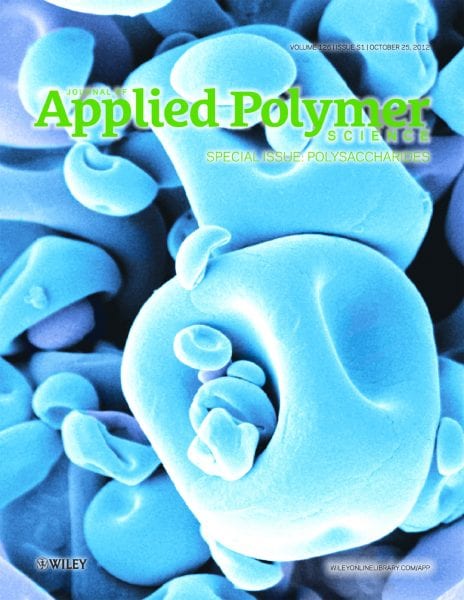 Polysaccharides are long carbohydrate polymers used in a variety of contexts. These renewably sourced polymers have long been singled out for their technological applications. From plastic processing to biomedical use, polysaccharides have the potential to deliver effective solutions for a variety of challenges.
Polysaccharides are long carbohydrate polymers used in a variety of contexts. These renewably sourced polymers have long been singled out for their technological applications. From plastic processing to biomedical use, polysaccharides have the potential to deliver effective solutions for a variety of challenges.
Since polysaccharides are employed across a wide range of research, as materials and as applications, it is a complex task to give a complete picture of the field. Now, a new special issue of the Journal of Applied Polymer Science on polysaccharides showcases the sheer variety of research published in this exciting field.
One of the most important complex branched heteropolymers discussed in this issue is starch. The applications of starch can range from the production of poly(lactic acid) to the production of thermoplastic starch used to make bioplastics. Current research is improving upon the mechanical and barrier properties and moisture absorption of thermoplastic starch, which are poor compared to its petroleum-derived competitors, in order to introduce commercial products.
Cellulose was first utilized in the second century for paper production in China. Featured in this issue are articles by M. Bulota et al. about microfibrillated cellulose to reinforce bioplastics, J. Plank et al. about hydroxyethyl cellulose as a fluid loss control additive in oil wells, and D. Lu et al. about production of bacterial cellulose-poly(vinyl alcohol) nanocomposite hydrogels.
In addition, biomedical uses of polysaccharides are developing at a fast pace. They are used in drug delivery to sustain release as in arabinogalactan capsules for formulation of diltiazem, a potent vasodilator, or alginate-chitosan hydrogel beads for formulation of an antitumoral drug. Polysaccharides are also used for tissue engineering as in dextran-based hydrogels for adipose tissues.

















